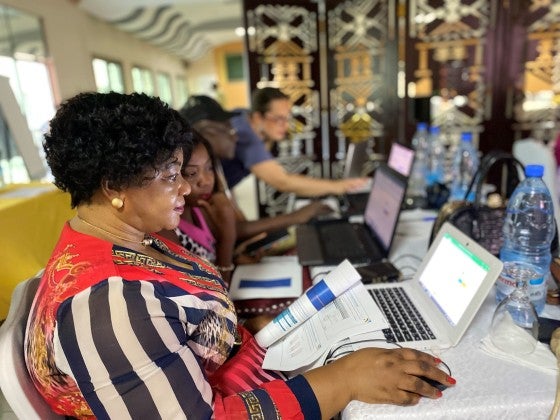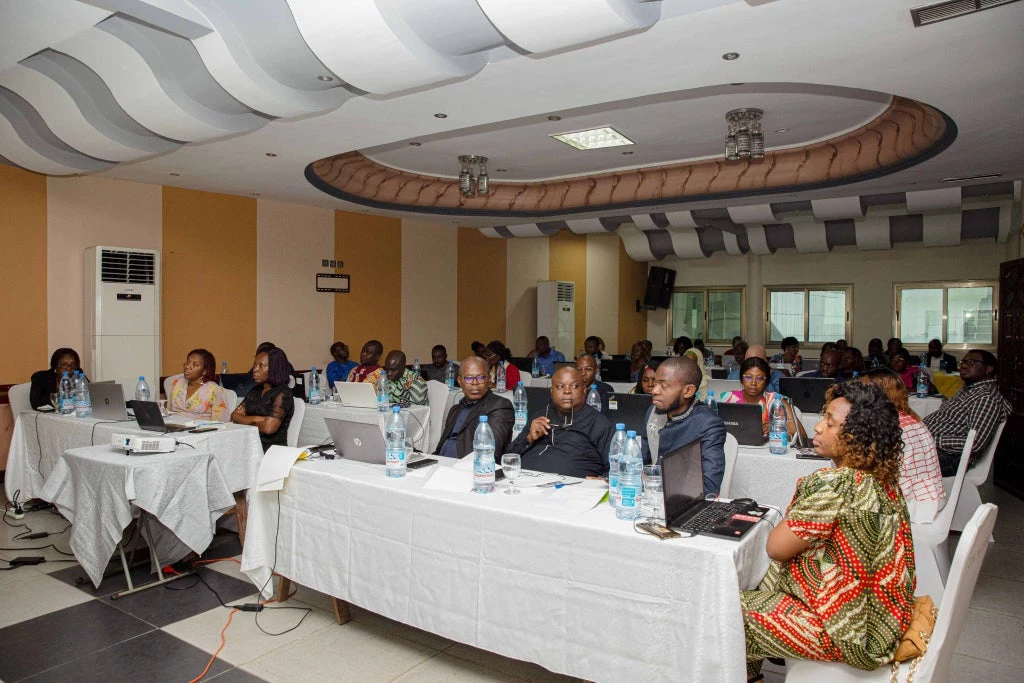
Gender statistics are critical to formulate and monitor effective policies to close gender gaps. Yet, gender data gaps loom large and too often the right data is simply not in the right hands at the right time. For example, gender data gap assessments for the 12 partner countries of the Strengthening Gender Statistics (SGS) project revealed that relevant sex-disaggregated data is often collected, but indicators are not adequately calculated or disseminated—imagine sitting on a treasure trove of data and not taking advantage of the valuable insights that could be derived from it!
In Cameroon, the SGS project brought together 12 different government institutions to work jointly on the country’s first Gender Factbook, a comprehensive publication that disseminates gender statistics through visuals and tables accompanied by relevant analysis and legal/policy frameworks that give context to the data presented.
Technical staff from the National Institute of Statistics (INS) calculated a host of indicators for the Sustainable Development Goals (SDGs) and the minimum list of gender indicators recommended by the United Nations Statistics Division, some of them previously unpublished. Throughout this process, INS staff and other participants have developed their data analysis, visualization and dissemination skills.
The Gender Factbook, to be launched in early 2024, will include data on time use, informal or unpaid work and several indicators calculated from the Third Survey on Employment and the Informal Sector in Cameroon 2021, but also from administrative data 'gems', such as national health records and education statistical yearbooks.
What are the main takeaways from this collaborative endeavor? Here are some thoughts from the project collaborators about their participation, but also on what it means to make gender data available for a broad audience.
Number one: The whole is much larger than the sum of its parts
From the onset, the Gender Factbook development was designed as a collaborative and inclusive process to build a community of gender data across different agencies. As a result, 40 technicians drawn from the National Institute of Statistics, the Ministry of Women’s Empowerment and the Family, and 10 sector ministries contributed to the factbook and provided confidential feedback on the exercise in the following way:
-
“The fact that the sectors participate, that they are involved, means that we share. That we know what's going on left and right. In fact: we all contribute together. Everyone will be on the inside.”
-
“Until now, we haven't had a base in each sector to develop policies. This way, we'll have a reference picture in all sectors.”
Number two: Bring your own data – take away new insights
Participants contributed to the selection of relevant indicators and all ministries shared their administrative data. This allowed the sectoral ministries to increase the visibility of their own gender data—within government and the public at-large.
-
“As a researcher, when you need [gender] data - the first reference is the Ministry of Women's Empowerment and the Family. Unfortunately, when people came, there was no data. So, I'd be delighted, because the next time a researcher refers to us, I'll be able to present them with the data.”
-
“The biggest challenge is to have the data available. At the level of each administration, data is produced, but it's complicated to get it. Inviting everyone to participate from the outset helps to ensure that everyone really tries to make their data available.”
Number three: Reaching a broader audience by leveraging new skills and tools
Technical staff from the 12 government institutions were also inspired by the possibilities opened by data visualization tools, allowing data producers to reach a much larger audience of potential data users.
-
“Visualization will help us get the most out of our data. We're used to producing large tables that are incomprehensible to politicians, decision-makers and the general public.”
Mastering the art of effective data communication does not happen overnight. The collaboration between the Strengthening Gender Statistics (SGS) project, the National Institute of Statistics, and the line ministries on the Factbook was launched officially in January 2023, followed by many meetings and a week-long training in July, each bringing us a step closer to holding the final publication in our hands.
Stay tuned for part 2 of this blog, where we will present highlights from the finalized Gender Factbook and its much-anticipated launch. It is time to open up that treasure trove!





Join the Conversation